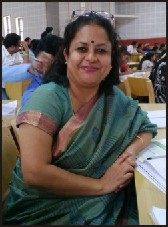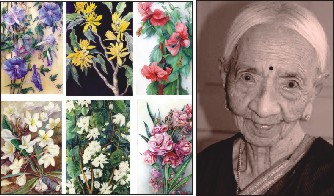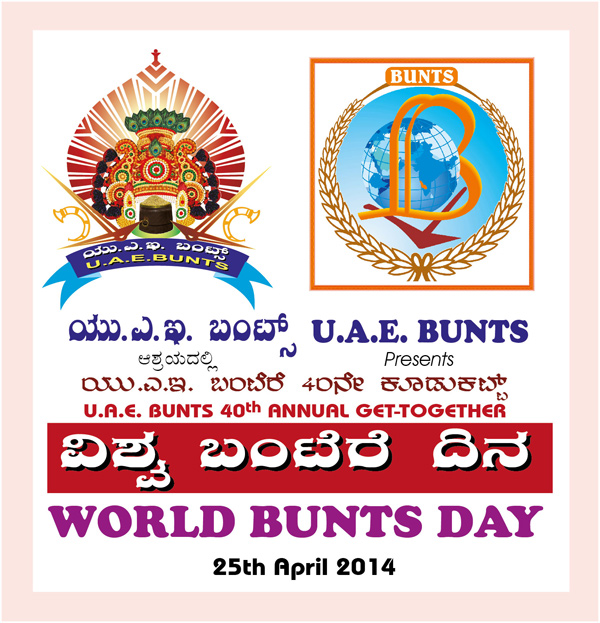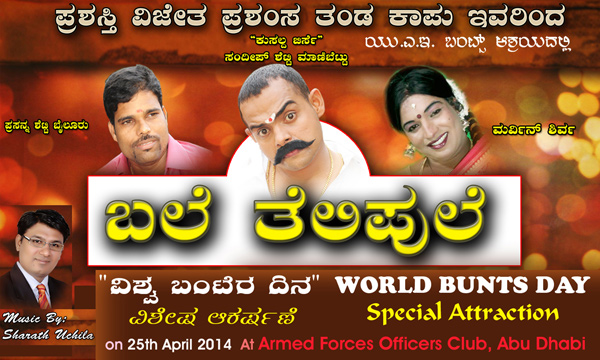
A scribe who took to script writing
Mysore city in the recent past has become a home for a number of people who have gone to make successful debut as actors and technicians in Kannada film industry. One such person is Preethi Nagaraj, who has played an important role in the Kannada movie December 1 directed by P. Sheshadri. The movie won national awards for Best Regional Film and Best Screenplay. Apart from assisting in the script, Preethi has also played a cameo in the movie. Having an experience as a journalist for around two decades, Preethi has been actively involved in theatre for many years. Star of Mysore (SOM) caught up with Preethi Nagaraj to talk about the movie and her experience. Here are the excerpts…
by S.N. Venkatnag Sobers
Star of Mysore (SOM): How did the script writing happen?
Preethi: There is no systematic approach for script writing. But these kinds of writings we get to read on a daily basis. As I used to read such scripts often, I took a liking towards them. In fact, scripts of cinema, television and theatre are not very different from each other but the thought process changes while scripting for each of them. When you compare all these three media, the film industry has a larger potential for script writing and hence I developed interest for it.
SOM: You have been associated with theatre activities for a long time now. Tell us something about it.
Preethi: I have been involved in theatres since childhood. There was a strong theatre movement in early 80s that I got to witness at Davangere when young. While my father, who was a teacher, was also involved in theatre activities, several big names from the theatre industry like B.V. Karanth and Lankesh also had been part of this theatre movement at Davangere during the 80s, all of which had a great influence on my mind during the time. The professional theatre also had been equally strong during the time, all of which inspired me towards indulging in theatrical activities.
SOM: How did you develop the interest in acting?
Preethi: As a child, acting was the only medium for me to explore as I grew up watching plays and people acting. The same continued even after I grew up since I would very frequently watch dramas whenever I got a chance to. The interest to hone my acting skills just continued and my passion towards the skill remains the same even to this day.
SOM: Having been a journalist before, did you find it easy to get into script writing?
Preethi: Basically I believe all of us are story tellers and each of us has some or the other story to narrate. But the advantage of being a journalist is that we are exposed to ground details unlike the others. The very renowned writer Marquez could become a good writer because he had been a journalist before making a big name as a writer. The perception is much sharper for journalists and thus the experience of having been a reporter before, certainly added to my experience. Also, Journalism is a profession that gives you immense experience apart from the life you live. As a journalist, you get to see a lot of things without filter. And this experience adds a lot when you want to play the narrator.
SOM: How did you get a chance to work for December 1?
Preethi: I got to know of the movie through my friends that Director P. Sheshadri is working towards a movie after which I went and met him and learnt about the script writing option. Since I had also assisted in script writing for a famous Kannada serial named Muktha Muktha that was aired a couple of years ago, I found it easier working on scripts. Because of this, I could comfortably write a script for parallel movies like December 1. I am now comfortable working on scripts for parallel movies.
SOM: You have also acted in December 1 apart from assisting in scripting. Tell us something about the role you played and the chance you bagged for acting in it?
Preethi: I have enacted as the Headmistress of a village school in December 1, who is of an arrogant character. My main focus was actually assisting Sheshadri in scripting; but he felt I would suit the role well and thus told me to act. I completed the shoot in just half a day’s time for which I went to Siruguppa in Dharwad and came back the same night.
SOM: How does it feel like to be part of a film that has won the prestigious national award?
Preethi: I feel very happy that I have been part of such a great film. I am delighted that I got a chance to work with Sheshadri who has been a great guide and wonderful mentor all through. The national award is actually a tribute to the director, producer and the actors who have struggled day and night to make the movie a success. Nivedita and Santosh, the lead actors of December 1, have done a great job and the cinematography is also excellent.
SOM: How supportive was your family through this journey?
Preethi: Family backing is very necessary for such explorations. After having quit active journalism, I felt I could experiment with other medium. My husband and my children, along with my father, mother and my husband’s family, everybody has been extremely supportive of my explorations. This has helped me a lot, to fly without the safety harness of holding a regular job. Time is ample and with family’s encouragement, one can really scale heights. I still have a long way to go. Living in Mysore, I am surrounded by creativity and solitude at the same time, to be able to involve myself in creative work. I am just a medium for all the creativity to come through.
SOM: Now that you have started exploring your talent and have also successfully worked towards it, what are your future plans? Do you wish to script for commercial films too?
Preethi: Currently, there is no plan as such. I want to complete my M.Sc. in Psychology that I have taken up as a correspondence course from the Karnataka State Open University (KSOU). As far as the commercial movies are concerned, my choice will depend on the director. I do not want to script anything for a movie that portrays violence and bloodshed.
source: http://www.starofmysore.com / Star of Mysore / Home> Feature Articles / April 27th, 2014









